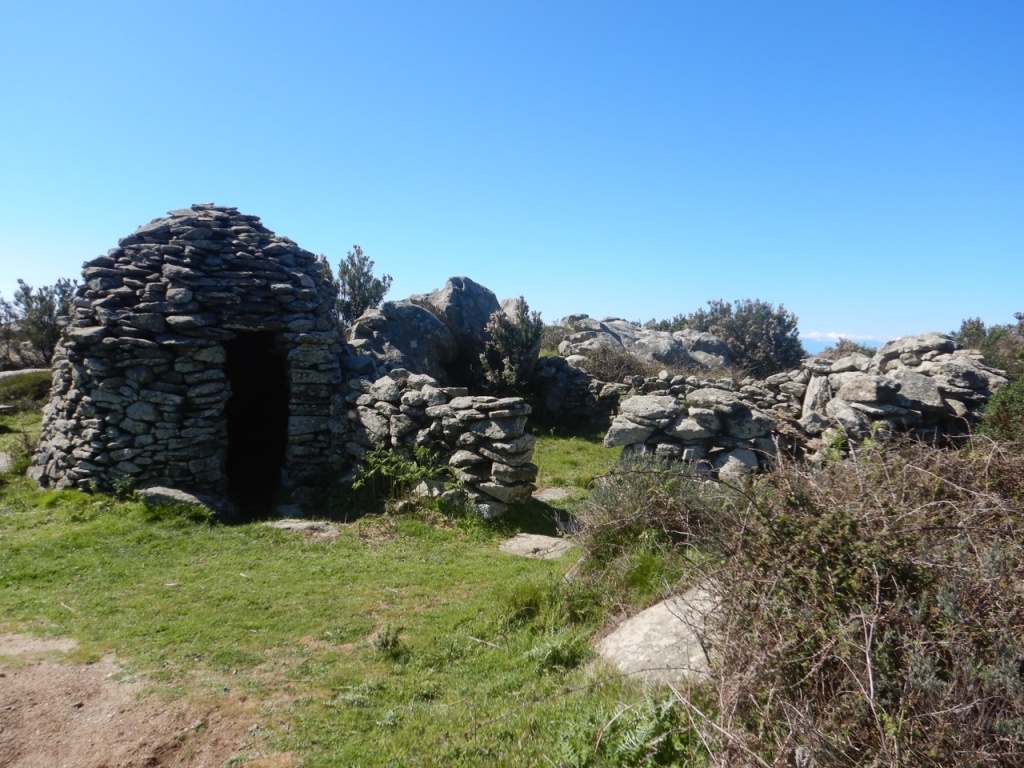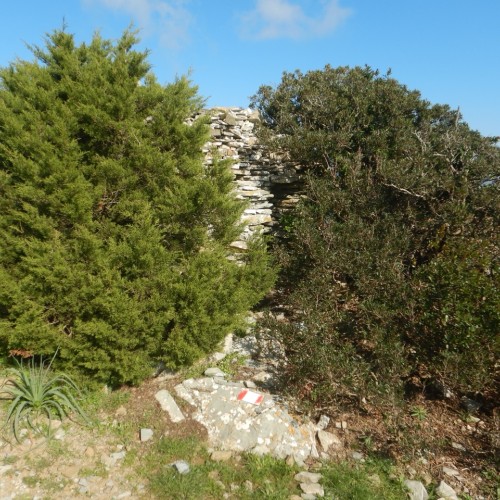
Along the section on path 248, leading from Mount Tambone towards Mount Fonza, several pastoral stone houses, or caprili, can still be seen, still in fair condition. These are dry stone walled constructions from an ancient tradition whose origins can be traced back to the Nuragic structures built by sub-Apennine shepherds more than 3000 years ago. Buildings like these are numerous, mainly on the Mount Capanne massif, but it is on Mount Fonza that we can easily observe three similar structures. Caprili were built and used by shepherds since ancient times, usually with dry stone enclosures 70-100 cm tall still visible beside them, for the flock of goats or sheep, animals that played an important part in the island's agricultural economy up until the last century.
These small stone houses are circular with a domed roof. The building material used on the slopes of Mount Capanne is, of course, granite, while, here in Fonza, the slabs used are limestone, sandstone and granodiorite porphyry, the rocks from which the promontory is formed. The stones have been carefully chosen and positioned, with the larger, heavier ones generally at the bottom. The buildings have a low door and sometimes also a small window, both sheltered from the prevailing winds. Inside, they feature a stone seat and a fireplace. This is where the shepherd would shelter on winter days and even spend the night in the event of bad weather. A study conducted by the Archaeology Department of the University of Siena, aided by aerial photography, recorded the ruins of over 100 similar buildings on the Island of Elba.
The greatest concentration was observed on the south-west slope of Mount Capanne. In these areas, many buildings are still standing and were used by shepherds in the fist half of the 20th century. Of the other caprili, aerial photographs only identified the remains of the base. The pastoral tradition in these locations probably never ceased for over 3000 years. The buildings were maintained from generation to generation and, if destroyed, they would have been rebuilt in the same place or on a nearby site using the same stones already there. It is no coincidence that, near these buildings, used until recent times by the shepherds of Elba, 3000-year-old clay and stone artifacts have been found. It is therefore important that buildings like these, once recorded and photographed, are kept intact and free from wild-growing vegetation.



